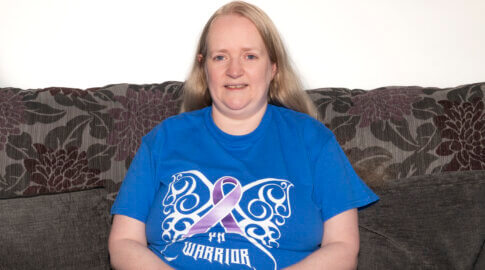Still sweating over HRT?
Dr Neil Hamilton is a Consultant Pharmacist at the Sheffield Pulmonary Vascular Disease Unit. Here, he unpicks some of the advice and evidence around Hormone Replacement Treatment for women with PH.
All information is correct at the time of publication (April 2022).
Hormone Replacement Therapy (HRT) has been the subject of much discussion, controversy, and column inches in the press. Whilst the benefits to menopausal and post-menopausal women are well known, the potential for side effects has also been well described.
As I investigated this column, I found that in November 2015, the National Institute for Health and Care Excellence (NICE) published a guideline for the use of HRT. You can find this here.
The guideline summarises very nicely the evidence for prescribing HRT along with a clear explanation of the risks and benefits. As with all NICE guidance, this was reviewed more recently in 2019 to ensure their advice remains up to date.
The menopause will affect all women at some point in their lives. Approximately 80% women experience some level of symptoms and current evidence shows that for some women these symptoms may last as long as 10-12 years. For some, the impact on their quality of life is huge. The symptoms of menopause can obviously affect all aspects of home, family, work and sex life. Hence this is a very significant problem to tackle and one of the key messages of the guideline is for women to seek advice from their GP in the first instance and receive the most appropriate treatment.
For women with pulmonary hypertension, the situation is further complicated. HRT treatments are either a combination of oestrogen and progesterone, oestrogen alone or a medicine called tibolone (more commonly started by hospital specialists if other options are not suitable or have not worked). Progesterone alone is not prescribed to treat menopausal symptoms, but it is used for endometrial protection in women with a uterus (either as part of a ‘combined’ HRT, via Mirena-IUS or as a progestogen capsule).
In addition to the range of medication contents, there are also different ways that the HRT is presented. HRT tablets used to be the most prescribed form, but the skin patches and gels are now preferred for most patients. The skin patches are easy to use; they are replaced every few days, slowly releasing medicine which is absorbed through the skin. Gels are increasingly popular as they are so convenient; simply rub the correct amount onto the skin every day.
It is worth bearing in mind that if any patient prescribed an oestrogen-only gel or patch has not either had a hysterectomy or has a Mirena coil in place, the doctor will also prescribe a progesterone tablet to reduce the risk of womb cancer.
The 2015 NICE guideline has answered some long-standing concerns and clearly described the pros and cons of treatment. However, as with other chronic conditions, the interaction between oestrogen and PH is not fully understood. Firstly, there are valid reasons why oestrogen may be beneficial, not least because it has a protective effect on the bones (it protects against osteoporosis). It can also provide relief from the flushes and psychological issues such as mood-swings.
However, oestrogens also have pro-thrombotic properties (i.e. they increase the risk of blood clots). This will have a varying degree of importance depending on the type of PH that you have. For example, if you have Chronic Thromboembolic Pulmonary Hypertension (CTEPH), any increase in the chance of having further clots could be life-threatening. As a result of the higher risk of clots, oral HRT is not recommended as a first choice anymore. Therefore, patients with PH would be offered the patches as a good option.
There is a lot of research work underway looking at all aspects of oestrogen in PH. Such work includes looking at whether oestrogen may cause PH, whether high levels may be involved in making a diagnosis of PH more likely, and even whether treatment with oestrogen-like compounds could be beneficial. If the investigators are able to draw some useful conclusions from their work, the picture may be clearer. However, at the moment the evidence for taking oestrogens in any form remains very conflicting.
The NICE guideline does a great job of raising the importance of appropriate management of menopausal symptoms. It goes a long way to clarifying and describing the long-term risks of taking HRT, which will allay some commonly held misconceptions. The 2019 review brought this up to date by looking at more recent studies to see if the advice concerning risks of long-term complications such as heart disease, stroke, diabetes, osteoporosis, different cancers and blood clots needed to be changed. Interestingly the best new evidence was often mixed; either showing that HRT did not increase the risk of long-term problems or was shown to have the effects that were already described. As such, the review did not change the 2015 guidelines, so their recommendations remain in place.
In summary, HRT offers an effective treatment for menopausal symptoms. HRT patches or gel do not appear to be associated with an increased risk of blood clots and may provide an attractive route of administration for patients with PH. If you think you are suffering from symptoms which may be related to the menopause then it would be sensible to discuss with your GP who can fully assess whether HRT is the correct treatment for you. Your specialist centre will be happy to give your GP advice if needed.
















